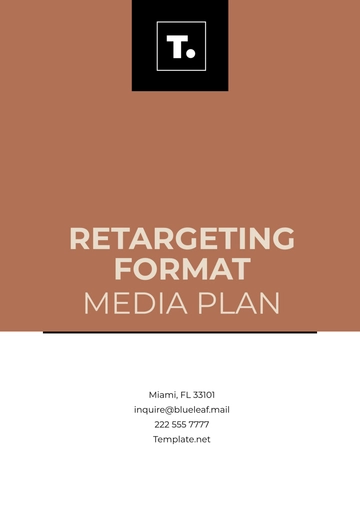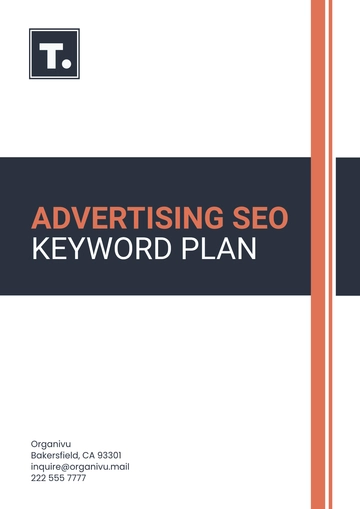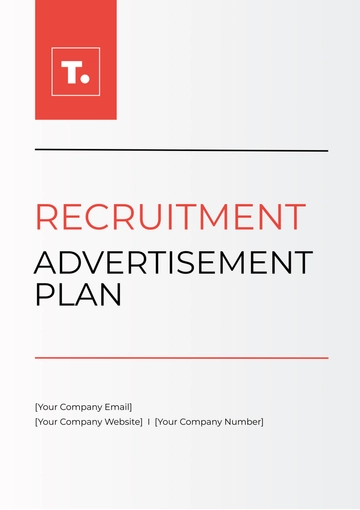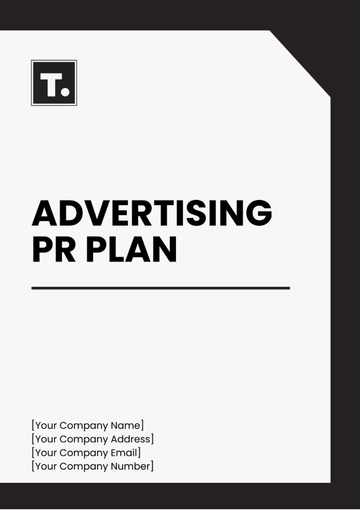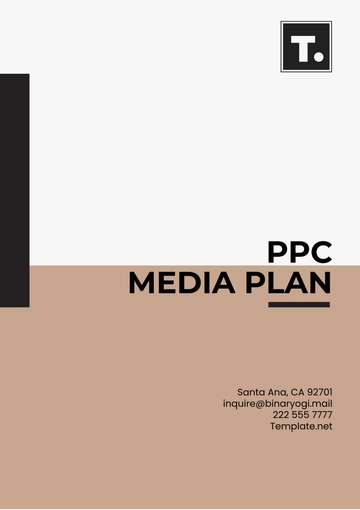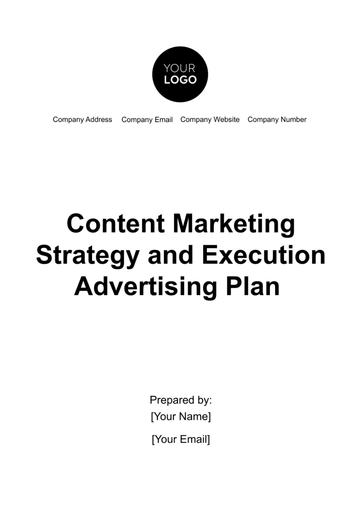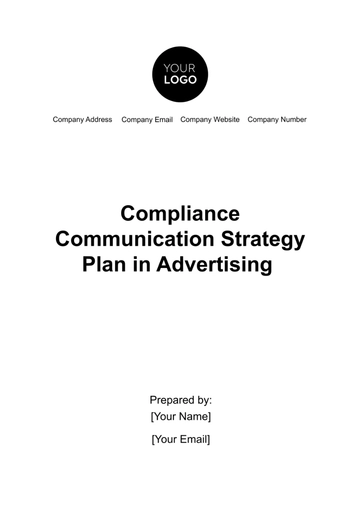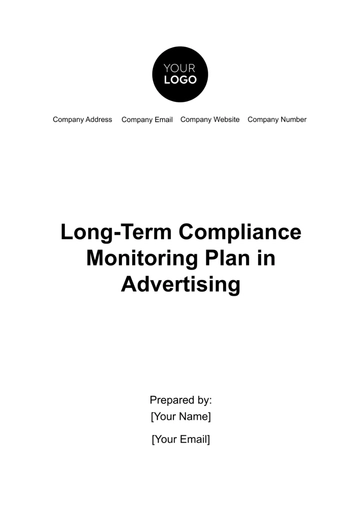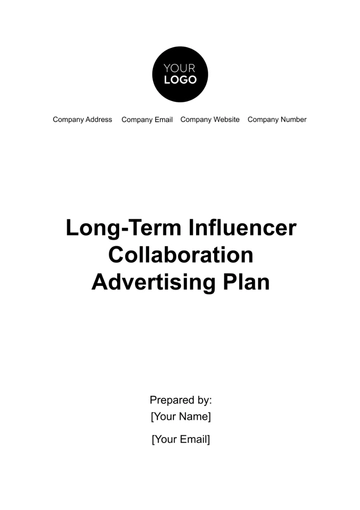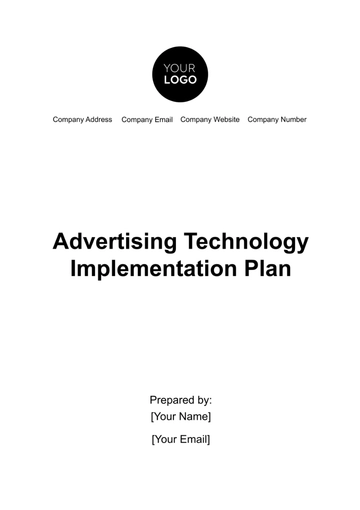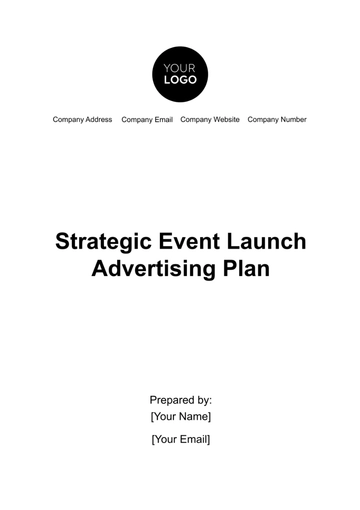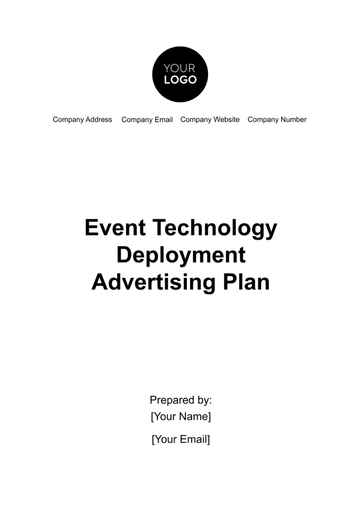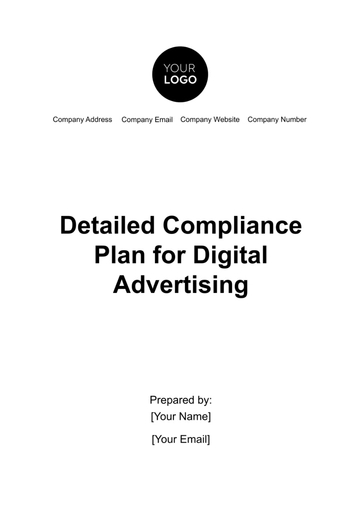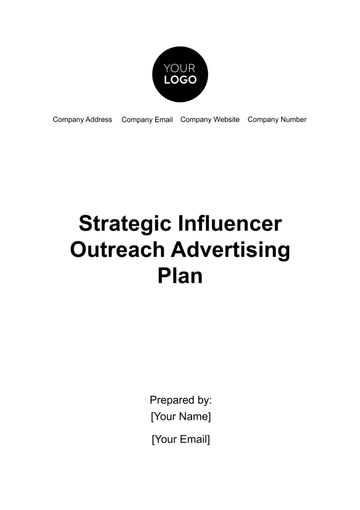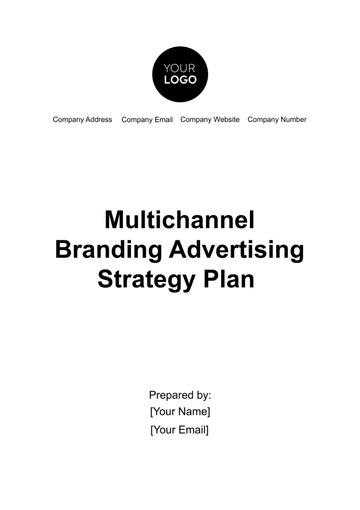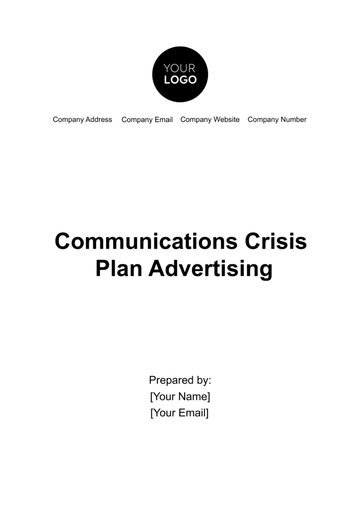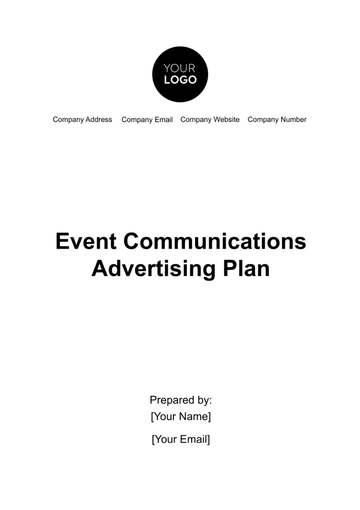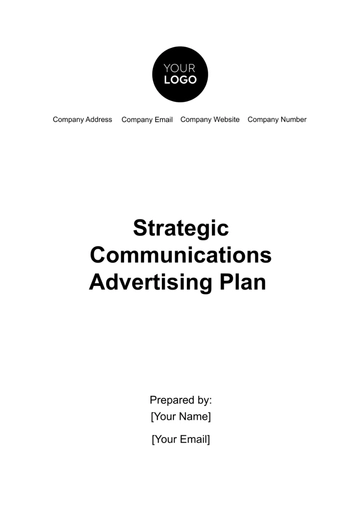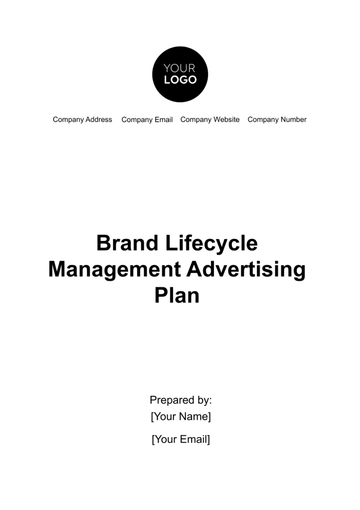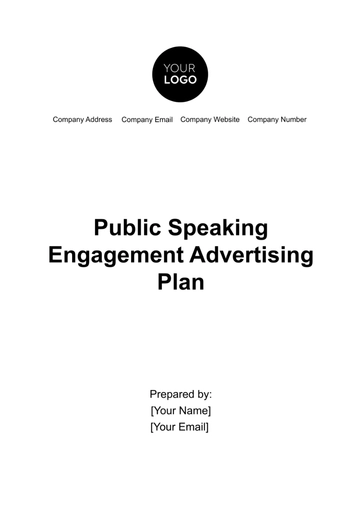Free Advertising Media Plan

Prepared by:
[YOUR NAME]
[YOUR COMPANY NAME]
Campaign Objective
To increase brand awareness and drive sales for the new EcoSmart Water Bottle, targeting environmentally-conscious consumers aged 18-35.
1. Target Audience
Demographics
Age: 18-35
Gender: Both male and female
Location: Urban and suburban areas, with a focus on eco-friendly cities
Interests: Sustainability, fitness, outdoor activities, and health-conscious living
Income: Middle to upper-middle-class
Psychographics
Environmentally conscious, values sustainability
Interested in health and wellness
Active on social media, especially Instagram and TikTok
2. Campaign Goals
Primary Goal
Achieve a 20% increase in brand awareness within the target audience within the first two months.
Secondary Goals
Generate 500,000 website visits to the product page
Drive 10,000 direct product purchases through the campaign
Engage 50,000 social media interactions (likes, shares, comments)
3. Media Channels
The media plan will leverage a mix of traditional and digital media to reach the target audience effectively. The channels chosen are based on audience habits and the nature of the product.
Digital Media
Social Media: Instagram, TikTok, and Facebook Ads for targeted posts, influencer collaborations, and remarketing campaigns
Search Engine Marketing (SEM): Google Ads targeting keywords like "sustainable water bottles" and "eco-friendly fitness accessories"
Display Ads: Banner ads on eco-friendly blogs and health & wellness websites
Email Marketing: Weekly product promotions and eco-tips to an existing customer base
Traditional Media
Print Ads: Full-page ads in fitness and lifestyle magazines (e.g., Runner’s World, Men’s Health)
Radio: Sponsored segments on eco-conscious radio stations
Outdoor: Billboards in eco-friendly urban neighborhoods (e.g., New York, San Francisco, Seattle)
4. Media Buy Strategy
Digital Advertising Budget and Timing
Media Channel | Budget Allocation | Timing |
|---|---|---|
Social Media | $15,000 | 5 posts per week for 2 months (starting 2 weeks before launch) |
SEM | $7,000 | Targeting the first 3 months post-launch |
Display Ads | $5,000 | 1-month campaign across health and eco-focused websites |
Email Marketing | $3,000 | Weekly emails during the first two months |
Traditional Media Budget and Timing
Media Channel | Budget Allocation | Timing |
|---|---|---|
Print Ads | $10,000 | Run throughout the first two months of the campaign |
Radio | $4,000 | 2-minute sponsored segments per week for 4 weeks |
Outdoor Ads | $6,000 | Display for 1 month in targeted urban areas |
5. Media Scheduling
Media Scheduling
Media Channel | Type | Timing | Budget Allocation |
|---|---|---|---|
Sponsored Posts | 2 weeks pre-launch + 8 weeks post-launch | $10,000 | |
TikTok | Influencer Collab | 4 weeks (pre-launch to post-launch) | $5,000 |
Facebook Ads | Sponsored Posts | 4 weeks post-launch | $3,000 |
Google Ads | SEM | Ongoing for 3 months | $7,000 |
Print Ads | Full-page | 2 months post-launch | $10,000 |
Radio | Sponsored Segment | 4 weeks post-launch | $4,000 |
Outdoor Billboards | Display Ads | 1 month (launch month) | $6,000 |
6. Budget Summary
Media Type | Budget Allocation |
|---|---|
Digital Media | $30,000 |
Traditional Media | $20,000 |
Total Budget | $50,000 |
7. Key Performance Indicators (KPIs)
Brand Awareness: Measured by engagement rates on social media, website traffic, and media impressions (via social platforms, SEM, and print ads).
Website Visits: Tracked using Google Analytics (target: 500,000 visits)
Sales: Direct purchases tracked through eCommerce platforms (target: 10,000 units sold)
Social Media Engagement: Measured by likes, shares, comments, and user-generated content (target: 50,000 interactions)
8. Evaluation and Adjustments
Weekly Reporting: Monitor performance on all platforms and adjust ad spends based on the best-performing channels.
Mid-Campaign Review: Evaluate effectiveness at the 4-week mark to optimize strategies, such as increasing social media ad spending or shifting budget between channels.
Post-Campaign Analysis: Assess overall success using KPIs, gathering feedback from influencers and partners, and identifying opportunities for future campaigns.
This Advertising Media Plan is designed to maximize reach, engagement, and conversions for the EcoSmart Water Bottle launch, effectively targeting a highly engaged and environmentally-conscious audience.
- 100% Customizable, free editor
- Access 1 Million+ Templates, photo’s & graphics
- Download or share as a template
- Click and replace photos, graphics, text, backgrounds
- Resize, crop, AI write & more
- Access advanced editor
Introducing the Advertising Media Plan Template by Template.net – your ultimate solution for strategic marketing endeavors. Crafted to perfection, this editable and customizable template empowers you to tailor your advertising strategies effortlessly. With seamless compatibility with our Ai Editor Tool, creating impactful media plans has never been easier. Elevate your campaigns today!
You may also like
- Finance Plan
- Construction Plan
- Sales Plan
- Development Plan
- Career Plan
- Budget Plan
- HR Plan
- Education Plan
- Transition Plan
- Work Plan
- Training Plan
- Communication Plan
- Operation Plan
- Health And Safety Plan
- Strategy Plan
- Professional Development Plan
- Advertising Plan
- Risk Management Plan
- Restaurant Plan
- School Plan
- Nursing Home Patient Care Plan
- Nursing Care Plan
- Plan Event
- Startup Plan
- Social Media Plan
- Staffing Plan
- Annual Plan
- Content Plan
- Payment Plan
- Implementation Plan
- Hotel Plan
- Workout Plan
- Accounting Plan
- Campaign Plan
- Essay Plan
- 30 60 90 Day Plan
- Research Plan
- Recruitment Plan
- 90 Day Plan
- Quarterly Plan
- Emergency Plan
- 5 Year Plan
- Gym Plan
- Personal Plan
- IT and Software Plan
- Treatment Plan
- Real Estate Plan
- Law Firm Plan
- Healthcare Plan
- Improvement Plan
- Media Plan
- 5 Year Business Plan
- Learning Plan
- Marketing Campaign Plan
- Travel Agency Plan
- Cleaning Services Plan
- Interior Design Plan
- Performance Plan
- PR Plan
- Birth Plan
- Life Plan
- SEO Plan
- Disaster Recovery Plan
- Continuity Plan
- Launch Plan
- Legal Plan
- Behavior Plan
- Performance Improvement Plan
- Salon Plan
- Security Plan
- Security Management Plan
- Employee Development Plan
- Quality Plan
- Service Improvement Plan
- Growth Plan
- Incident Response Plan
- Basketball Plan
- Emergency Action Plan
- Product Launch Plan
- Spa Plan
- Employee Training Plan
- Data Analysis Plan
- Employee Action Plan
- Territory Plan
- Audit Plan
- Classroom Plan
- Activity Plan
- Parenting Plan
- Care Plan
- Project Execution Plan
- Exercise Plan
- Internship Plan
- Software Development Plan
- Continuous Improvement Plan
- Leave Plan
- 90 Day Sales Plan
- Advertising Agency Plan
- Employee Transition Plan
- Smart Action Plan
- Workplace Safety Plan
- Behavior Change Plan
- Contingency Plan
- Continuity of Operations Plan
- Health Plan
- Quality Control Plan
- Self Plan
- Sports Development Plan
- Change Management Plan
- Ecommerce Plan
- Personal Financial Plan
- Process Improvement Plan
- 30-60-90 Day Sales Plan
- Crisis Management Plan
- Engagement Plan
- Execution Plan
- Pandemic Plan
- Quality Assurance Plan
- Service Continuity Plan
- Agile Project Plan
- Fundraising Plan
- Job Transition Plan
- Asset Maintenance Plan
- Maintenance Plan
- Software Test Plan
- Staff Training and Development Plan
- 3 Year Plan
- Brand Activation Plan
- Release Plan
- Resource Plan
- Risk Mitigation Plan
- Teacher Plan
- 30 60 90 Day Plan for New Manager
- Food Safety Plan
- Food Truck Plan
- Hiring Plan
- Quality Management Plan
- Wellness Plan
- Behavior Intervention Plan
- Bonus Plan
- Investment Plan
- Maternity Leave Plan
- Pandemic Response Plan
- Succession Planning
- Coaching Plan
- Configuration Management Plan
- Remote Work Plan
- Self Care Plan
- Teaching Plan
- 100-Day Plan
- HACCP Plan
- Student Plan
- Sustainability Plan
- 30 60 90 Day Plan for Interview
- Access Plan
- Site Specific Safety Plan

